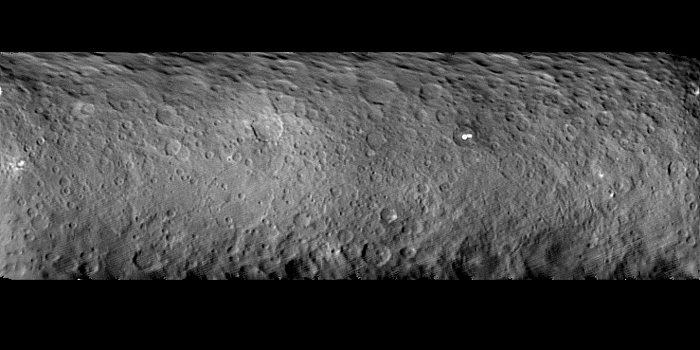Ceres is named for the Roman goddess of agriculture and harvests. Ceres is considered a 'dwarf planet', according to 237 astronomers who outvoted their opposition, as is Pluto now. It was first spotted by Sicilian astronomer Father Giuseppe Piazzi in 1801 and since then has been called a minor planet and an asteroid, before getting an upgrade in 2006, along with Eris.
Launched in September 2007, Dawn already explored the giant asteroid Vesta for 14 months in 2011 and 2012, capturing detailed images and data about that body. Both Vesta and Ceres orbit the sun between Mars and Jupiter, in the main asteroid belt. This two-stop tour of our solar system is made possible by Dawn's ion propulsion system, its three ion engines being much more efficient than chemical propulsion. Dawn began its final approach phase toward Ceres in December. The spacecraft has taken several optical navigation images and made two rotation characterizations, allowing Ceres to be observed through its full nine-hour rotation.

Mosaic of images taken by NASA's Dawn mission on Feb. 19, 2015 from a distance of nearly 29,000 miles (46,000 kilometers). An unusually large basin nearly 186 miles (300 kilometers) across is seen just south of the equator, with a shallow interior, faint rim and low-relief mounds within. Several bright spots are seen, including two that are very bright and lie within a single crater north of the equator. The bright spot in the center of that crater is too small to be resolved at this distance, so its true brightness is not yet known. Credit: NASA/JPL-Caltech/UCLA/MPS/DLR/IDA
Since Jan. 25th, Dawn has been delivering the highest-resolution images of Ceres ever captured, and they will continue to improve in quality as the spacecraft approaches.
Recent images show numerous craters and unusual bright spots that scientists believe tell how Ceres, the first object discovered in our solar system's asteroid belt, formed and whether its surface is changing. As the spacecraft spirals into closer and closer orbits around the dwarf planet, researchers will be looking for signs that these strange features are changing, which would suggest current geological activity.






Comments